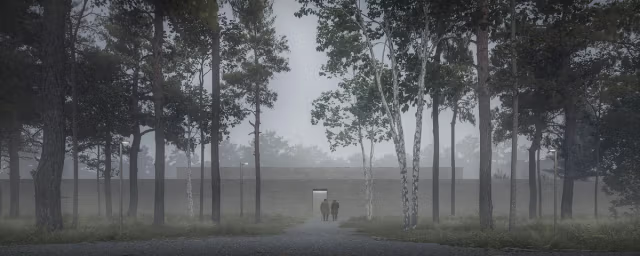Treblinka, Poland: Decades after the end of World War II, a new purpose-built museum is finally under construction to properly commemorate the atrocities committed at Treblinka, one of the most notorious Nazi death camps. The new facility, set to open soon, will ensure that the site’s history is preserved for future generations.
Between 1941 and 1942, the Nazis established two camps at Treblinka: Treblinka I, a forced labor camp for Jewish prisoners, and Treblinka II, an extermination center where an estimated 925,000 people—primarily Jewish victims from Warsaw, as well as Poles, Roma, and Sinti—were murdered as part of Operation Reinhard. Despite its tragic significance, Treblinka has long lacked a dedicated museum space worthy of its history.
“For decades, survivors, scholars, and Polish citizens have fought to ensure that Treblinka is not forgotten,” says Iwona Wasilewska, deputy director of the Treblinka Museum. Now, with a new museum building underway, that fight is finally bearing fruit.
A History of Neglect
Efforts to establish a Treblinka memorial began as early as 1947, but no formal institution materialized for years. The Nazis went to extreme lengths to conceal their crimes, dismantling the camp, killing the remaining prisoners, and covering the site with a false farm planted with lupine flowers.
It wasn’t until 1964 that an official memorial, designed by Franciszek Duszeńko, Adam Haupt, and Franciszek Strynkiewicz, was unveiled. In the 1980s, the site was turned into a museum under the administration of the Regional Museum of Siedlce. It was only in 2018 that Treblinka Museum became an independent institution, jointly overseen by the Masovian Voivodeship Self-Government and Poland’s Ministry of Culture and National Heritage.
However, for years, the museum operated out of a small 1960s caretaker’s house, which was expanded in the 2010s to include an exhibition space and conference room. The limited facilities have long struggled to accommodate growing visitor numbers and new historical research.
A Museum for the Future
Designed by Warsaw-based Bujnowski Architekci, the new museum will finally provide an appropriate space to document Treblinka’s history. The new building will offer 730 square meters of exhibition space—a vast improvement from the current 150 square meters. It will include expanded education rooms, a conference hall, archives, and a space for quiet reflection.
Recent archaeological discoveries have further underscored the need for a more comprehensive museum. British scholar Caroline Sturdy Colls and Polish researcher Sebastian Różycki have used geo-radar technology to uncover new evidence of gas chambers, cremation grids, and the Schlauch—the camouflaged passageway that led victims from the receiving area to the gas chambers. A forthcoming publication, Treblinka: Traces of Crime, set for release in April, will present these findings in detail.
The museum will also house the haunting sculptures of Samuel Willenberg, a Treblinka survivor whose works depict daily life in the camp—scenes of fathers removing children’s shoes, huddled naked women, and prisoners sorting through piles of confiscated belongings.
In 2024, Treblinka Museum recorded 37,000 visitors, marking a steady recovery from pre-pandemic levels, which peaked at 61,000 in 2019. With the new museum in place, attendance is expected to grow significantly.
A Commitment to Remembrance
For Wasilewska, the importance of Treblinka’s new museum extends beyond historical preservation. “Treblinka is a place where contempt for human life resulted in genocide,” she says. “We have a responsibility not only to remember its victims but also to continually reflect on our own values and attitudes toward others. Preserving this memory is essential—not only to honor the past but to prevent similar atrocities in the future.”
With the opening of the new museum, Treblinka’s tragic history will finally have the space it deserves—a space dedicated to education, remembrance, and the commitment to never forget.



0 Comments